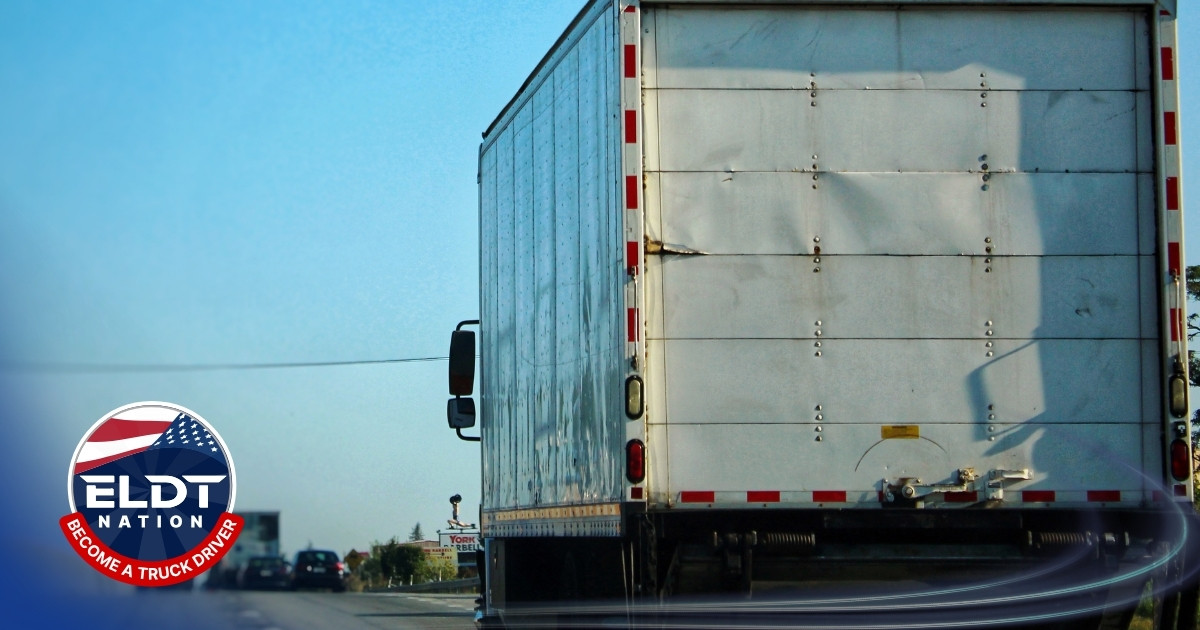How to Save Money on Fuel and Increase Profit Margins in Your Trucking Business
Fuel is often the single largest operating expense for a trucking company, second only to driver wages. When diesel prices spike, profit margins evaporate unless you have strategies in place to control consumption and recover costs. Fortunately, there are numerous ways to reduce fuel spending without compromising delivery times or customer satisfaction. This guide explores proven methods—from driver behavior and vehicle maintenance to fuel purchasing strategies and technological solutions—that help fleets of all sizes cut fuel expenses and boost profitability.
The Importance of Fuel Management
A typical tractor‑trailer can consume 20,000 to 30,000 gallons of diesel per year. At $4 per gallon, that’s $80,000 to $120,000 annually per truck. Even a modest reduction of 5 percent in fuel use translates to thousands of dollars in savings. Effective fuel management also lowers emissions and engine wear, reduces downtime and enhances your reputation as an environmentally responsible carrier. By implementing a holistic fuel strategy, you gain a competitive advantage and cushion your business against volatile markets.
Use Fuel Cost Calculators and Benchmarking
Before you can improve fuel efficiency, you need to understand where you stand. Fuel cost calculators and benchmarking tools help you analyze consumption and identify inefficiencies. Many telematics providers and fleet management platforms offer built‑in calculators that track fuel purchases, miles driven, idle time and fuel economy across vehicles. Compare your fleet’s performance to industry averages; this context allows you to set realistic goals. For example, if the average fuel economy for a Class 8 truck is 6.5 mpg and your fleet achieves 6 mpg, you know there is room for improvement.
Encourage Fuel‑Efficient Driving
Driver behavior has a significant impact on fuel consumption. According to industry studies, aggressive driving—rapid acceleration, speeding and hard braking—can increase fuel usage by up to 30 percent. Conversely, adopting fuel‑efficient habits can yield substantial savings.
Key driver behaviors to promote
- Maintain steady speeds – Cruising at a consistent speed improves fuel economy. Use cruise control when traffic and road conditions permit.
- Avoid speeding – Fuel consumption increases dramatically above 55–60 mph. Each 1 mph increase above 60 mph can reduce fuel economy by roughly 0.1 mpg. Encourage drivers to stay within speed limits and remind them that slower speeds save fuel and reduce wear on tires and engines.
- Accelerate smoothly – Gradual acceleration reduces fuel waste. Drivers should shift through gears at lower RPMs and avoid revving the engine unnecessarily.
- Plan stops – Anticipating traffic lights, stop signs and slowing vehicles allows for gentle braking, which conserves momentum and reduces fuel use.
- Minimize idling – Idling can burn roughly 0.75 gallons of fuel per hour and adds unnecessary engine hours. If a truck will be stopped for more than a minute or two, drivers should shut off the engine (unless operating a refrigerator unit or other equipment requiring power). Auxiliary power units (APUs) or battery‑powered climate control systems can provide cabin comfort without idling.
- Reduce payload weight – While you cannot always control cargo weight, eliminate unnecessary items stored in the cab or on the trailer. Every 100 pounds reduces fuel efficiency slightly, so lighten the load where possible.
Implement driver training and incentives
Ongoing training helps drivers internalize efficient practices. Many fleets use in‑cab coaching devices that provide real‑time feedback on fuel‑wasting behaviors. Telematics reports highlight idling time, harsh braking events and speeding, allowing managers to address specific issues. Consider fuel‑efficiency incentive programs that reward drivers who achieve high miles per gallon (MPG) or reduce idle time. Recognizing good behavior fosters a culture of efficiency.
Choose Fuel‑Efficient Tires and Maintain Proper Inflation
Tires account for a significant portion of rolling resistance, which affects fuel consumption. Low rolling resistance (LRR) tires can improve fuel economy by 3–6 percent compared with conventional tires. Maintaining proper inflation is equally important; underinflated tires increase rolling resistance and wear unevenly. According to research, tires underinflated by 10 psi can reduce fuel economy by up to 1 percent.
Invest in quality tires rated for fuel efficiency, and implement an automatic tire inflation system (ATIS) or tire pressure monitoring system (TPMS) that maintains optimal pressure. Inspect tires regularly for damage and ensure proper alignment; misalignment causes drag and decreases MPG.
Avoid Excessive Idling
Idling is one of the most significant sources of fuel waste. Modern diesel engines do not require long warm‑up periods, yet drivers often idle during rest breaks, waiting for loading or unloading, or to power auxiliary equipment. The Sennder report notes that idling can burn around 4.5 liters (1.18 gallons) of fuel per hour and cause 64,000 miles of unnecessary engine wear per year if left unchecked. Minimize idling by:
- Using APUs or battery‑powered HVAC units
- Encouraging drivers to turn off engines during loading, unloading or long waits
- Educating drivers on anti‑idling laws and company policies
- Installing automatic engine shut‑off devices that stop the engine after a specified idle period
.jpg)
Use Fuel Cards and Discounts
Fuel cards provide discounted fuel prices, track spending and simplify IFTA tax reporting. Cards such as DKV and E100 (popular in Europe) or Comdata and Fleet One (in North America) offer negotiated discounts at major truck stops. Some cards provide additional benefits, such as deferred billing, rebates on tires and maintenance, and detailed reports that help you analyze fuel usage by vehicle and driver. When choosing a fuel card, consider:
- Network coverage – Ensure discounts apply at locations along your routes.
- Fees – Some cards charge monthly or transaction fees; factor these into savings calculations.
- Data reporting – Look for cards that integrate with your accounting software and provide customizable reports.
- Security features – Cards should have PIN protection and real‑time alerts to prevent unauthorized use.
Track Vehicle Performance with Telematics
Telematics systems collect data from your vehicles’ onboard sensors and send it to cloud dashboards. They monitor speed, acceleration, braking, idling, fuel consumption, engine fault codes and more. Analyzing this data identifies inefficiencies and maintenance issues affecting fuel economy. For example:
- Detecting aggressive driving – Alerts for hard braking, rapid acceleration or speeding allow managers to coach drivers.
- Monitoring idle time – Reports show which drivers idle excessively so you can address habits.
- Scheduling maintenance – Engine diagnostics reveal issues such as clogged air filters or faulty fuel injectors that reduce efficiency.
- Route compliance – Telematics confirm that drivers follow planned fuel‑efficient routes rather than taking longer or congested paths.
By pairing telematics with fuel cards and TMS, you gain a comprehensive view of fuel spend and can make data‑driven decisions.
Improve Route Efficiency
Deadheading (driving without a load) and inefficient routing waste fuel and reduce revenue. Use route optimization software or services to plan the most efficient paths based on distance, traffic patterns, weight restrictions and fuel stops. When planning routes:
- Minimize empty miles – Plan backhauls and load assignments to ensure trucks return with cargo whenever possible. Load boards and freight matching platforms can connect you with shippers needing capacity on return trips.
- Consider real‑time traffic – Avoid congestion, accidents or road work that increase stop‑and‑go driving. Some apps automatically reroute drivers around delays.
- Group deliveries – Consolidate shipments to reduce the number of trips. Less‑than‑truckload (LTL) carriers benefit from efficient route clustering.
- Avoid toll roads when feasible – Tolls can add to operating costs. However, sometimes toll roads save enough time and fuel to justify the fee. Evaluate both fuel and toll costs when planning.
Avoid Empty Runs
Running empty is one of the most obvious—and avoidable—sources of fuel waste. Plan loads to reduce deadhead miles and maintain vehicle productivity:
- Use digital freight marketplaces – Online platforms allow carriers to find loads that match their route and equipment, reducing empty miles. Many include tools to filter by pickup and delivery times, weight, and commodity type.
- Establish relationships with shippers and brokers – Building a network of regular customers ensures a more consistent flow of backhaul loads.
- Coordinate with other carriers – In some regions, fleets partner to exchange loads and reduce deadhead miles on both sides. Collaborative logistics can boost efficiency for everyone.
Explore Alternative and Renewable Fuels
Although diesel remains the dominant fuel for long‑haul trucking, alternatives are gaining traction. Compressed natural gas (CNG), liquefied natural gas (LNG), biodiesel and renewable diesel offer lower emissions and, in some cases, lower fuel costs. Electric trucks are emerging for regional and last‑mile routes. While the upfront cost of alternative‑fuel vehicles can be higher, incentives, reduced fuel costs and environmental benefits may make them worthwhile investments. Evaluate options based on your routes, payloads, fueling infrastructure and long‑term sustainability goals.
Upgrade Vehicle Aerodynamics and Reduce Drag
Wind resistance increases exponentially with speed and accounts for a large portion of fuel consumption. Aerodynamic improvements, such as roof fairings, side fairings, trailer skirts, wheel covers and tail devices (boat tails), can improve fuel economy by 5–15 percent. Additionally, reducing gap space between tractor and trailer, lowering ride height and using aerodynamic mud flaps further decrease drag. When buying new equipment, prioritize aerodynamic designs. Retrofitting older vehicles with aero devices can also pay for itself quickly through fuel savings.
Perform Regular Maintenance
Engines that are well‑maintained burn fuel more efficiently. Some critical maintenance practices include:
- Keep air filters clean – Dirty air filters restrict airflow, causing the engine to work harder and consume more fuel.
- Change oil and use proper viscosity – Fresh oil reduces friction and internal engine wear. Low‑viscosity synthetic oils can improve fuel economy.
- Inspect fuel injectors – Clogged or leaking injectors can waste fuel; periodic cleaning or replacement ensures proper atomization.
- Check wheel alignment – Misaligned wheels cause drag and uneven tire wear.
- Maintain cooling systems – Overheated engines operate inefficiently. Keep radiators clean and coolant levels correct.
- Calibrate sensors – Faulty sensors (e.g., oxygen sensors) can send incorrect data to the engine control module, leading to rich fuel mixtures and poor MPG.
Fuel‑Saving Strategies and Potential Benefits
The table below summarizes key fuel‑saving strategies and the estimated benefits they provide. Actual savings vary based on vehicle type, routes and driver adherence, but the table illustrates the potential impact of each measure.
Visit ELDT Nation for training that drives results. Invest in your education today and keep your business rolling efficiently into the future.







